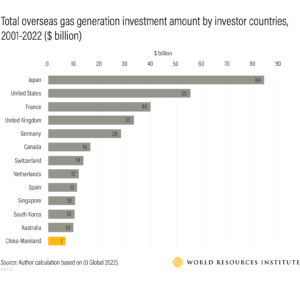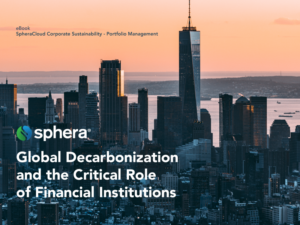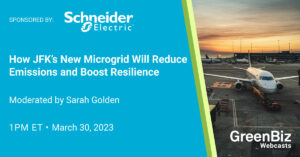
The top carbon-credit rating agencies deliver grades that are inconsistent, often undervalue safeguards for local communities and sometimes ignore additional environmental benefits brought by the projects whose integrity they claim to be reviewing, according to Carbon Market Watch (CMW).
Worse, carbon credits “do not represent the genuine emissions reductions or removals that they claim,” CMW said.
CMW, a nonprofit watchdog, evaluated four rating agencies — BeZero, Calyx, Renoster and Sylvera — in a report published earlier this month. The agencies are independent, third-party organizations that assess whether credits accurately represent the tonnes of carbon that companies claim are being removed from their business projects. The agencies sell their reports to prospective buyers in the voluntary market for carbon credit.
Here are the CMW’s five most important takeaways.
1. The ratings agencies aren’t consistent
The report showed the ratings for three projects across the agencies — an avoided deforestation project in the Amazon, a wildlife sanctuary in Cambodia and a forest restoration program in Uruguay.
The noteworthy headline? The projects were not uniformly rated by each body. For example, the Amazon project received a high ranking from Sylvera, while Calyx and BeZero gave the project a low rating:
- Sylvera: Tier 1
- Calyx: D
- BeZero: C
2. No agency considers safeguards in its assessment
None of the four agencies incorporate safeguards that prevent negative impacts on local communities, Indigenous people or the environment into their ratings. Sylvera considers safeguards only as a part of its co-benefits score. CMW recommends agencies add safeguards as part of their credit quality score.
3. Everyone weights ‘additionality’ scores differently
All the agencies agree that the most important potential benefit of a carbon reduction program is whether it produces additional environmental benefits that go beyond the original scope of the plan. But “additionality” scores are not assessed uniformly by all the agencies, the report said, nor are they always reflected in the final score. CMW suggested that the additionality score should be the maximum a project can get.
4. Don’t shoot the messenger for low credit scores
CMW advised buyers to avoid blaming rating agencies for low scores. Instead, they should focus their ire on the underperformance of the projects. Buyers should also be careful to understand exactly what the agencies mean by each of their ratings. For instance, an “A” might look like a reasonably good score at first glance — but it’s a poor rating if the top score is “AAA.”
5. ‘Carbon credits will not solve the climate crisis’
Finally, CMW advises investors that merely buying carbon credits does not make an organization carbon neutral. To quote the report directly: “A tonne is not a tonne. Don’t use carbon credits to claim carbon neutrality. Even though the bar is raised by rating agencies, carbon credits are not a miraculous solution that will solve the climate crisis. Carbon credits circulating in the market by and large do not represent the genuine emissions reductions or removals that they claim, and using them for tonne-for-tonne compensation and accounting of emissions is as inaccurate as it is misguided.”
- SEO Powered Content & PR Distribution. Get Amplified Today.
- PlatoData.Network Vertical Generative Ai. Empower Yourself. Access Here.
- PlatoAiStream. Web3 Intelligence. Knowledge Amplified. Access Here.
- PlatoESG. Carbon, CleanTech, Energy, Environment, Solar, Waste Management. Access Here.
- PlatoHealth. Biotech and Clinical Trials Intelligence. Access Here.
- Source: https://www.greenbiz.com/article/top-carbon-credit-rating-agencies-are-often-inconsistent-and-inaccurate-watchdog-claims
- :is
- :not
- a
- AAA
- According
- Accounting
- accurately
- across
- add
- Additional
- agencies
- agency
- All
- also
- always
- Amazon
- an
- and
- ARE
- AS
- assess
- assessed
- At
- avoid
- avoided
- bar
- BE
- being
- benefit
- benefits
- Beyond
- Blaming
- body
- brought
- business
- but
- buyers
- Buying
- by
- Cambodia
- CAN
- Can Get
- carbon
- carbon credits
- Carbon Neutrality
- Carbon Reduction
- careful
- circulating
- claim
- claims
- Climate
- climate crisis
- Communities
- Companies
- Compensation
- considers
- credit
- Credits
- crisis
- deforestation
- deliver
- directly
- do
- does
- Dont
- each
- Earlier
- Emissions
- Environment
- environmental
- Ether (ETH)
- evaluated
- Even
- everyone
- exactly
- example
- final
- First
- five
- Focus
- For
- forest
- four
- from
- gave
- genuine
- get
- Glance
- Go
- good
- headline
- High
- HTTPS
- if
- Impacts
- important
- in
- inaccurate
- incorporate
- independent
- instance
- instead
- integrity
- into
- Investors
- IT
- ITS
- jpg
- large
- like
- local
- Look
- look like
- Low
- make
- Market
- maximum
- mean
- merely
- Messenger
- might
- most
- negative
- Neutral
- no
- Nonprofit
- nor
- noteworthy
- of
- often
- on
- only
- or
- organization
- organizations
- original
- part
- People
- plan
- plato
- Plato Data Intelligence
- PlatoData
- poor
- potential
- prevent
- produces
- Program
- project
- Project A
- projects
- prospective
- published
- quality
- quote
- raised
- Ranking
- rated
- rating
- Rating agencies
- ratings
- received
- recommends
- reduction
- reductions
- reflected
- removals
- Removed
- report
- Reports
- represent
- restoration
- reviewing
- safeguards
- Said
- scope
- score
- scores
- sell
- Shoot
- should
- showed
- solution
- SOLVE
- sometimes
- Takeaways
- that
- The
- The Projects
- their
- Them
- they
- third-party
- this
- though?
- three
- tier
- to
- top
- understand
- uruguay
- use
- using
- voluntary
- Watch
- watchdog
- were
- What
- whether
- while
- whose
- Wildlife
- will
- zephyrnet







